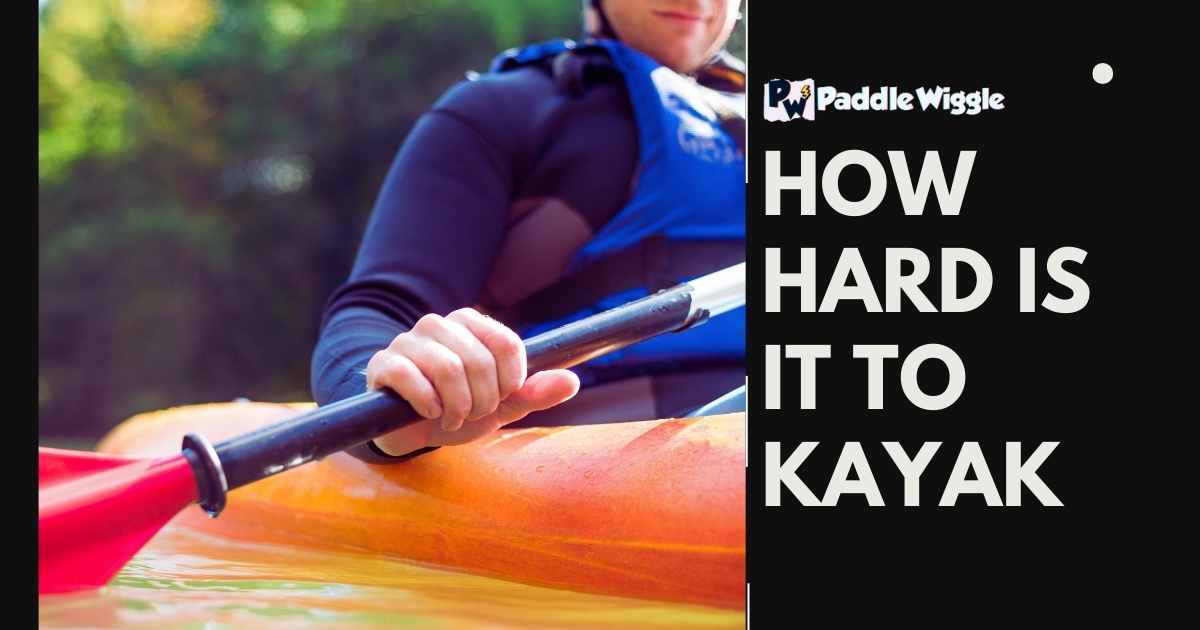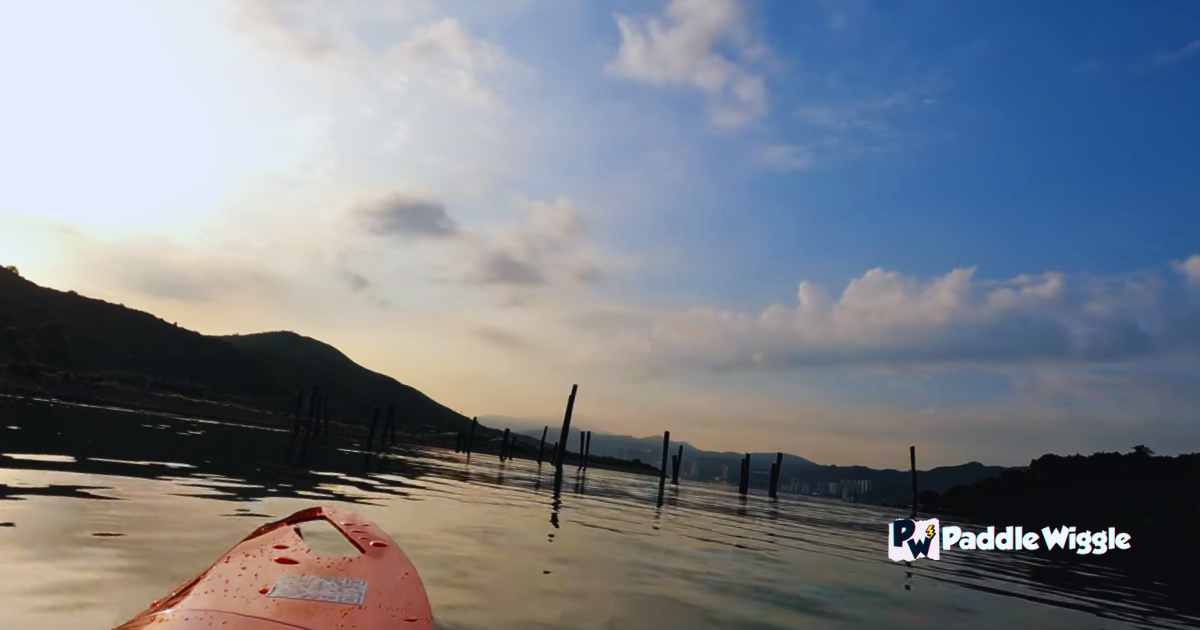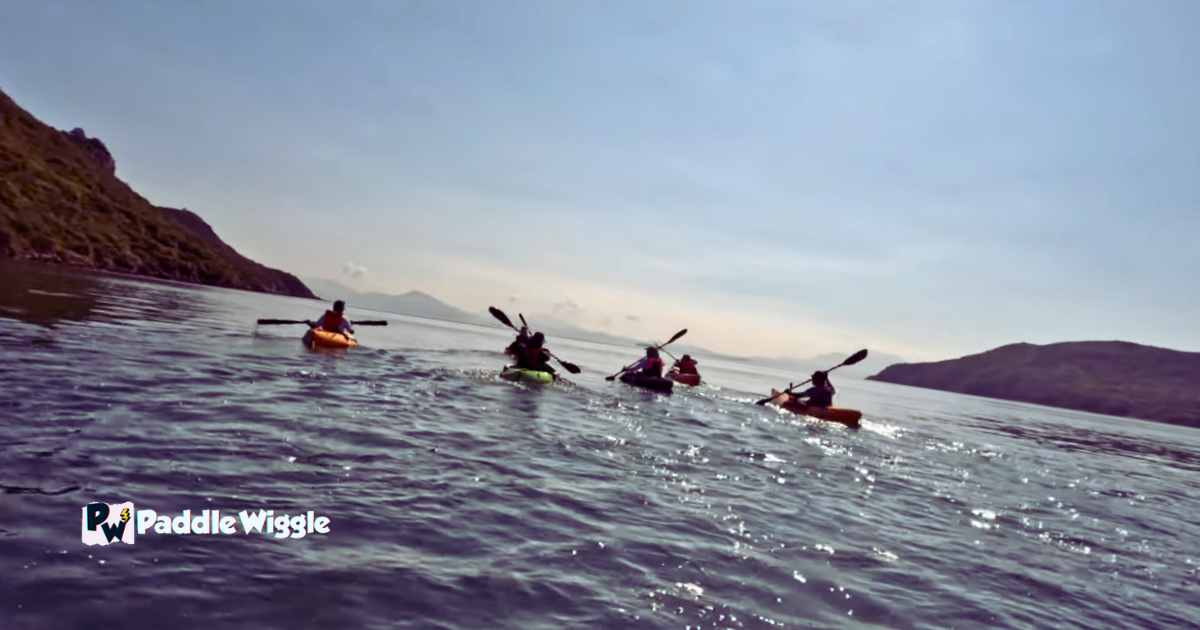Kayaking is an exciting world filled with adventure and nature. Whether you’re on calm lakes, rushing rivers, or open seas, it offers diverse experiences for both beginners and enthusiasts. But here’s the big question: Is kayaking hard, or is that just a myth from experienced kayakers?
The quick answer is that kayaking is relatively easy. The difficulty of kayaking vastly depends on your experience and understanding. Kayaking may seem like a daunting activity, but the truth is that it’s easier than you might think. If you’re new to kayaking, it might seem challenging, but it’s often easier than you’d expect.
In simpler terms, kayaking can be quite easy, especially when you’re paddling on calm waters for fun. However, when you tackle more challenging conditions like whitewater or open sea kayaking, it can get physically and technically demanding.
We need to question the idea that kayaking is universally tough. In reality, it becomes much more manageable when you know proper techniques and safety measures.
So, in this exploration, we’ll dive into how hard or easy kayaking truly is. We’ll consider various factors like the type of kayaking, your skill level, the gear you use, the weather, and whether you’ve had proper training. Our goal is to find out if kayaking is genuinely difficult or if most people can enjoy it without too much trouble.
Contents


Is Kayaking Hard for Beginners?
Learning to kayak as a beginner may seem daunting at first, but let me assure you, it’s easier than it may appear. In fact, kayaking is relatively easy compared to other outdoor activities and can be quite enjoyable.
So, if you’re thinking about giving it a try, don’t let the fear of difficulty hold you back!
Kayaking Basics Made Easy
One of the great things about kayaking is that it doesn’t have an excessively high barrier to entry. Kayaking is a water sport that’s easier to learn compared to some others. You don’t need a lot of training or special skills to get the hang of it. Most people can pick up the basics of kayaking pretty fast.
To begin with kayaking, you’ll need to learn a few important skills. These include how to paddle to move forward, how to steer your kayak in the right direction, and how to keep yourself steady and balanced. These skills can be acquired in a short amount of time with proper instruction and practice.
Understanding the Challenges Faced by Novice Kayakers


Kayaking is relatively easy, but beginners might face some challenges while learning. It’s important to be aware of these challenges so that you can navigate them effectively.
- Physical exertion: Kayaking needs physical effort because you use your upper body strength to paddle in the water. This can be tiring for some individuals initially but will improve with practice.
- Balance and coordination: It might be tricky to stay balanced in a kayak, especially if you’re not used to being on the water. But if you practice and use the right methods, your balance and coordination will get better with time.
- Environmental factors: Things like wind, waves, and the way the water moves can make a difference in your kayaking. If you’re just starting out, it’s a good idea to pick places with calm water at first. Once you feel more sure and have more experience, you can try rougher waters.
The Learning Curve for Beginners in Kayaking
Like any new skill or activity, there is a learning curve involved in kayaking. It’s okay to have some trouble at first, but if you keep trying and practicing, you’ll get better and more confident on the water.


- Finding your balance: As a beginner, finding your balance in a kayak may take a few tries. But don’t worry; it’s all part of the learning process. Start by paddling in calm waters and gradually challenge yourself as you gain confidence.
- Building strength and endurance: Kayaking can make you tired because it’s physically demanding. But as you keep kayaking regularly, your muscles will get stronger, and you’ll be able to paddle for longer without feeling as tired.
- Developing navigation skills: Getting the hang of steering and moving your kayak the right way needs time and practice. Try out various ways of paddling and techniques to become better at controlling your kayak.
Remember that everyone progresses at their own pace, so be patient with yourself as you learn this new skill. Before you know it, you’ll be gliding through the water like a pro!
What Science Shows- Kayaking is Hard or Easy
To kayak well, you need a strong upper body and a stable core. People who do regular strength training exercises might find kayaking easier on their bodies than those who aren’t as physically fit.
One study found that beginners may initially need help with basic paddling techniques and maintaining balance in their kayak. However, with practice and proper instruction, individuals can improve their skills over time.
Remember, everyone’s experience is different. What’s hard for one person might be easy for another. The difficulty can also depend on things like the type of kayak you’re using, like a regular one or a whitewater one, and what you’re trying to do while kayaking.
Why do people think kayaking is hard?
Many people, especially beginners, often believe that kayaking is a difficult activity. There are several reasons behind this perception, which can be attributed to various factors.
Perceived Complexity
One reason why some individuals think kayaking is hard is because they perceive it as a complex sport. They may believe that it involves intricate techniques and specialized equipment. For people who haven’t tried kayaking, the thought of paddling through wavy and unpredictable water might feel a bit scary.
Initial Learning Curve
Another reason why people think kayaking is hard is because when you’re just starting, there’s a lot to learn. Beginners have to get used to things like how to paddle, control the boat, and stay steady on the water. These skills require practice and patience to master. It’s natural for newcomers to feel challenged during their early attempts at kayaking.
Physical Demands
The physical demands of kayaking can also make it appear hard to some people. Paddling involves using your arm and shoulder muscles, which can be tough if you’re not used to exercising those areas regularly. If you don’t use the right technique and conditioning, making the same motion over and over can make your muscles tired.
Fear of Water
Suppose you’re not comfortable in the water or scared of drowning. Being close to the water while kayaking can be scary. Being in a small boat in the middle of a big water area might make some people feel anxious or nervous. It can take a while to get over these fears, but it’s good to know that wearing a life jacket can help you feel safer.
Safety Concerns
Concerns about safety also contribute to the perception that kayaking is hard. A few folks are concerned about their kayak flipping over or getting stuck when they come across rough water or obstacles. But it’s important to know that if you get the right training, learn rescue methods, and follow safety rules, you can reduce these risks. Kayaking is a safe and enjoyable activity when practiced responsibly.
Debunking myths about kayaking difficulty
Kayaking is a fun outdoor activity that lets you explore nature and have a great time on the water. But some people think it’s harder than it actually is, and that can stop them from giving it a try.
Let’s debunk these myths to ensure kayaking is easier than you may think.
#1. Only Athletes Can Excel at Kayaking
Many people believe that kayaking is a sport reserved for athletes or those with exceptional physical abilities. However, this couldn’t be further from the truth! While kayaking does require some level of fitness, it is not limited to only the fittest among us.
In fact, there are beginner-friendly kayaks and lessons available for newcomers to get started on their kayaking journey.
- Beginner-friendly kayaks and lessons make kayaking accessible to everyone.
- You don’t have to be an athlete to enjoy kayaking; it’s for people of all fitness levels.
#2. Age or Gender Determines One’s Ability to Kayak Effectively
Another common misconception about kayaking is that age or gender determines one’s ability to kayak effectively. This couldn’t be more false! Kayaking is a sport that can be enjoyed by people of all ages and genders. Whether you’re a young child or a senior citizen, male or female, you can hop into a kayak and paddle away!
- Age and gender do not determine your ability to kayak effectively.
- People of all ages and genders can enjoy the sport of kayaking.
#3. Mastering Advanced Techniques is Mandatory
A few people think you need to learn advanced techniques to have fun while kayaking. It’s true that these advanced skills can make you even better, but you don’t have to have them to enjoy kayaking. You can learn the basics pretty fast and start having fun on your kayak right away.
- You don’t need to master advanced techniques to have fun while kayaking.
- Basic kayaking skills are enough for beginners to enjoy their time on the water.
Beginners Tips To Lessen Difficulties In Kayaking
Kayaking is an exciting outdoor activity that lets you explore water and nature’s beauty. If you’re new to kayaking, it’s good to know some tips that can make your experience better and more fun.
Here’s what to maintain:
Customized Kayak Fit
Investing in a custom-fitted kayak is key for beginner kayakers. It’s like finding the perfect pair of shoes that fit just right! When your kayak is tailored to your body type and preferences, it optimizes both comfort and performance on the water. So, make sure you choose a kayak that suits you like a glove.
Advanced Paddle Techniques
Once you’ve got your customized kayak sorted, it’s time to level up your paddle game. Mastering advanced paddle techniques will make kayaking easier and more enjoyable. For whitewater kayaking, learning the Eskimo roll technique can help you recover quickly if you capsize. And for long-distance touring, focus on high-efficiency strokes that maximize your paddling power while conserving energy.
Navigation Skills
If you’re new to kayaking, it’s important to learn how to find your way around when you’re on the water. This means knowing how to use GPS devices and read maps. These skills will be really helpful when you want to go on more difficult kayaking trips. They’ll help you explore new places and discover cool things you might not have known about.
Wilderness Survival Skills
Kayaking often takes us into remote areas where unexpected situations can arise. That’s why acquiring wilderness survival skills is essential for every kayaker. Knowing how to build shelters, start fires, and find food and water sources will help you handle emergencies or unplanned overnight stays during your adventures.
Fitness Training
To make kayaking easier and more fun in the long term, it’s a good idea to work on your physical fitness. Creating a fitness routine designed to improve your endurance, strength, and flexibility will help you when you’re out on the water. Doing activities like running or cycling for cardio can boost your stamina. Plus, doing exercises that focus on your core muscles will make you more stable when you paddle.
If you’re new to kayaking, these tips will help you have an easier and more enjoyable time. Here’s what you need to do: pick the right kayak, learn advanced paddling, get better at finding your way and surviving, and stay in good shape. Keep practicing, and you’ll become a skilled kayaker ready for any adventure on the water.
Final Words
To sum it up, kayaking offers a wide range of experiences, from peaceful outings on calm waters to exciting adventures in tougher conditions. The idea that kayaking is always difficult is only true for some. It depends on your experience, the type of kayaking you do, and how well-prepared you are.
Even though kayaking might seem intimidating at first, it’s important to know that it’s not universally hard. With the right knowledge, practice, and safety precautions, kayaking can be fun and accessible for people with different levels of skill. Think of it as an adventure that can be enjoyed by both beginners and experts alike.



